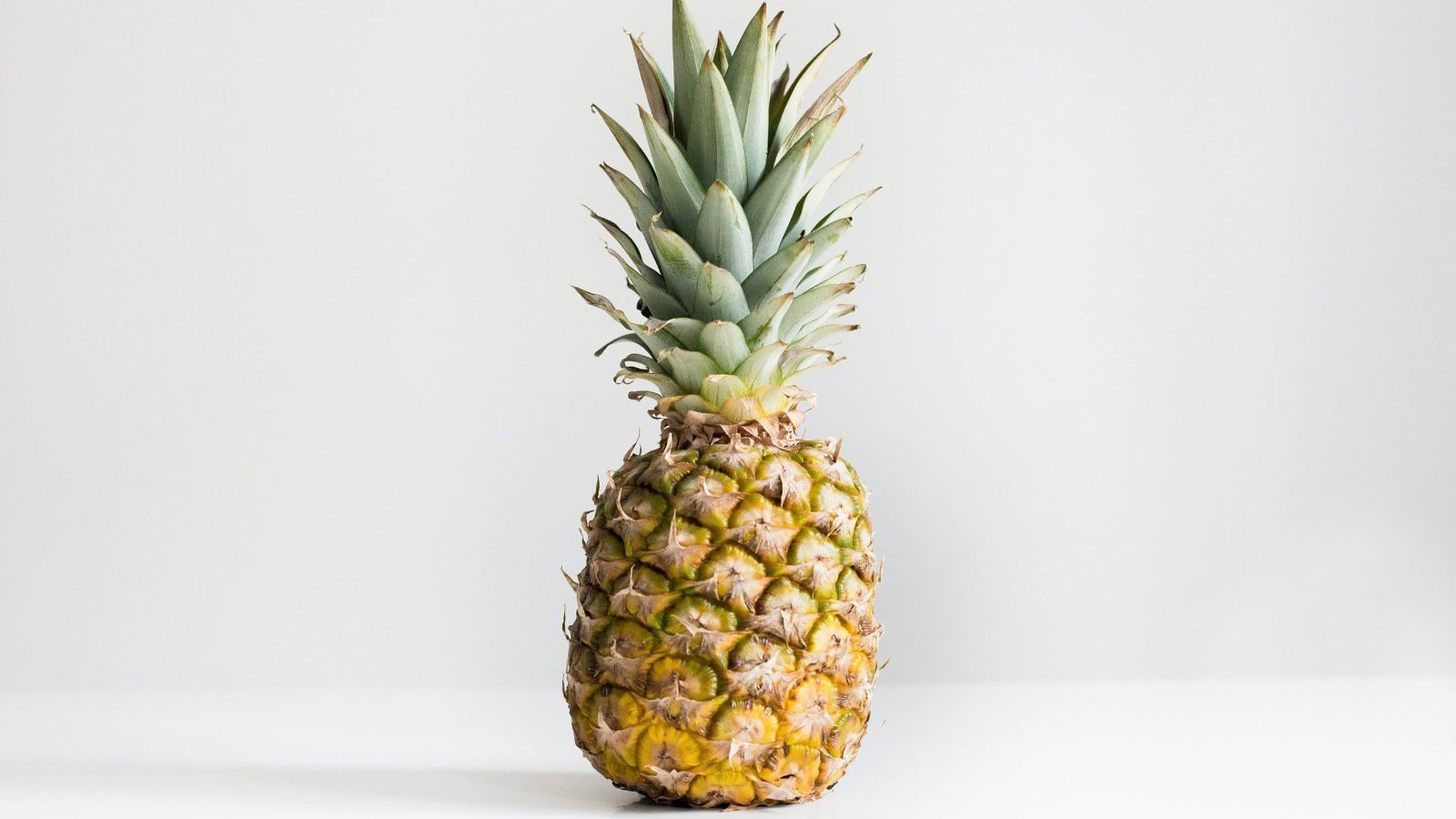
10 Tips for Growing Pineapples at Home
Pineapples, also known as ananas, are a tropical fruit that can be grown at home with the right conditions and care. Here are 10 tips for successfully growing pineapples in your own backyard.
Tip#1 Choose the Right Variety
When selecting a pineapple to grow at home, it’s important to choose a variety that is well-suited to your climate. The most popular variety for indoor growing is the ‘Smooth Cayenne,’ which is known for its sweet flavor and ability to tolerate lower light levels. However, it’s important to research the different varieties available and select one that will thrive in your specific environment. For example, if you live in a warm, tropical climate, the ‘Red Spanish’ or ‘Abacaxi’ varieties may be a better fit for you. It’s also important to note that some varieties, like the ‘Sugarloaf’ pineapple, are not as well suited for home growing as others. When buying pineapple plants, it’s also important to look for healthy, robust plants that show no signs of disease or pests. Avoid plants with yellow or wilted leaves, as these may indicate poor health.
When it comes to pineapple varieties, it’s important to research the different options available and select one that will thrive in your specific environment. For example, if you live in a warm, tropical climate, the ‘Red Spanish’ or ‘Abacaxi’ varieties may be a better fit for you. Keep in mind that some varieties, like the ‘Sugarloaf’ pineapple, are not as well suited for home growing as others. It’s also important to note that pineapples can be propagated from their own tops, so if you have a pineapple at home and you want to grow another one, you can use the crown from the pineapple you have to grow a new plant.
Tip#2 Provide Adequate Light
Pineapples require a lot of bright, indirect light in order to grow and produce fruit. If you live in an area with less than 8 hours of daily sunlight, you may need to supplement with artificial light. A south-facing window or a grow light can provide the necessary light for your pineapple plant to thrive. However, it’s important to not place the plant in direct sunlight as this can cause the leaves to burn.
The ideal location for a pineapple plant is in a sunny room with a south-facing window. If you don’t have access to a south-facing window, you can also use a grow light to provide the necessary light for the plant. However, it’s important to not place the plant in direct sunlight as this can cause the leaves to burn. When providing light for your pineapple, you should also be mindful of the temperature of the room. Keep in mind that pineapples prefer a warm and humid environment.
Tip#3 Keep the Soil Moist
Pineapples prefer to grow in moist, well-draining soil. Be sure to keep the soil consistently moist, but not waterlogged, in order to promote healthy growth. It’s important to not let the soil dry out completely, but also not to over-water as this can lead to root rot. A good way to check if your pineapple needs water is by sticking your finger in the soil, if it’s dry about an inch down, it’s time to water.
When it comes to soil, pineapples prefer a well-draining soil that is consistently moist but not waterlogged. A good way to check if your pineapple needs water is by sticking your finger in the soil. If it’s dry about an inch down, it’s time to water. Keep in mind that pineapples are sensitive to over-watering and can easily suffer from root rot if the soil stays too wet for too long. A good rule of thumb is to wait until the top inch of soil is dry before watering again.
Additionally, pineapples prefer a slightly acidic soil with a pH of around 5.5. You can test the pH of your soil and adjust accordingly with the appropriate fertilizer or soil amendment
down, it’s time to water. Keep in mind that pineapples are sensitive to over-watering and can easily suffer from root rot if the soil stays too wet for too long. A good rule of thumb is to wait until the top inch of soil is dry before watering again.
Tip#4 Maintain Proper Temperature
Pineapples are tropical plants and require warm temperatures to thrive. Ideally, temperatures should be kept between 70-85 degrees Fahrenheit. If you live in a colder climate, you may need to keep your pineapple plant indoors in order to maintain the proper temperature. It’s important to also note that temperatures below 50 degrees Fahrenheit can damage or kill the pineapple plant.
When it comes to temperature, pineapples prefer a warm and humid environment. They will do best in temperatures between 70-85 degrees Fahrenheit. If you live in a colder climate, it may be necessary to keep your pineapple plant indoors to maintain the proper temperature. Keep in mind that pineapples are sensitive to cold and can be damaged or killed by temperatures below 50 degrees Fahrenheit.
In addition to temperature, pineapples also require a high humidity level. If your home is particularly dry, you may need to use a humidifier or place a tray of water near the plant to increase the humidity level.
Tip#5 Fertilize Regularly
Pineapples require regular fertilization in order to produce healthy fruit. Use a balanced fertilizer with equal parts nitrogen, phosphorus, and potassium. A good time to fertilize is during the growing season, typically between spring and summer, and it’s important to follow the instructions on the fertilizer package.
When it comes to fertilization, pineapples require a balanced fertilizer with equal parts nitrogen, phosphorus, and potassium. The best time to fertilize is during the growing season, which is typically between spring and summer. Keep in mind that it’s important to follow the instructions on the fertilizer package and not to over-fertilize, as this can lead to leaf burn and other damage to the plant.
It’s also important to note that pineapples are heavy feeders and may require more frequent fertilization than other types of plants. Additionally, pineapples will also benefit from regular applications of organic matter such as compost or worm castings, which can help to improve soil health and fertility.
Tip#6 Provide Support
As pineapples grow, they can become top-heavy and may require support in order to stay upright. Use a stake or bamboo pole to provide support and keep the plant stable. Be sure to install the support when the pineapple is still small, as it will be harder to do it later on.
As pineapples grow taller and produce fruit, they can become top-heavy and may require support in order to stay upright. Use a stake or bamboo pole to provide support and keep the plant stable. Keep in mind that it’s important to install the support when the pineapple is still small, as it will be harder to do it later on.
Additionally, you can use a small tomato cage or other type of support structure to provide additional support for the plant. This will help to prevent damage to the fruit and leaves as the plant grows larger.
Tip#7 Use a Humidity Tray
A humidity tray is a simple and effective way to increase the humidity level around your pineapple plant. To create a humidity tray, simply place a tray filled with pebbles and water near the plant. As the water evaporates, it will increase the humidity level around the plant, promoting healthy growth. Additionally, you can also use a humidifier to increase humidity in the room where your pineapple plant is located. Keep in mind that pineapples prefer a high humidity level of around 60-70%.
Tip#8 Be Patient
Growing pineapples at home can be a slow process. It can take up to two years for a pineapple plant to produce fruit, so patience is key. When it comes to growing pineapples at home, it’s important to be patient. It can take up to two years for a pineapple plant to produce fruit, so it’s important to not get discouraged if you don’t see results right away. Additionally, it’s also important to keep in mind that pineapples will only produce fruit once and then the plant will die, so after you harvest the fruit the plant should be replaced.
In the meantime, enjoy the process of growing your pineapple and take care of it properly. See the new leaves growing, watch the plant growing taller, and enjoy the overall process of growing a pineapple.
Tip#9 Watch for Pests
Pineapple plants can be susceptible to pests like mealybugs, scale insects, and spider mites. Keep an eye out for any signs of infestation and take appropriate action if necessary. When it comes to pests, pineapple plants can be susceptible to a variety of common pests such as mealybugs, scale insects, and spider mites. Keep an eye out for any signs of infestation, such as yellowing leaves or small white cotton-like masses on the leaves.
If you do notice any pests, it’s important to take appropriate action right away to prevent further damage to the plant. There are a variety of pest control options available, such as insecticidal soap, neem oil, and horticultural oil. Be sure to follow the instructions on the product and take all necessary precautions to protect yourself and your plants.
Tip#10 Harvest at the Right Time
When your pineapple is ready to harvest, it will turn yellow and the leaves will start to turn brown. Wait until the fruit is fully ripe before harvesting to ensure the best flavor.When it comes to harvesting your pineapple, timing is key. The pineapple will be ready to harvest when it turns yellow and the leaves start to turn brown. It’s important to wait until the fruit is fully ripe before harvesting, as this will ensure the best flavor.
To determine if your pineapple is ready to harvest, you can also give the fruit a gentle tug. If it comes off the plant easily, it’s ready to be harvested. Once harvested, you can enjoy the sweet and juicy pineapple or use it in a variety of recipes such as pineapple salsa, pineapple smoothies or pineapple upside-down cake. Growing pineapples at home can be a fun and rewarding experience, but it does require patience and proper care. By following these 10 tips, you can successfully grow your own pineapples and enjoy the sweet taste of fresh pineapple right from your own backyard.
If you are interested in growing other fruits, check out these other articles: How to grow raspberries, How to grow dates, How to grow mango, How to grow pomegranate, How to grow pomelo, How to grow kiwi, How to grow strawberry, How to grow currants, How to grow khaki, How to grow cranberries, How to grow bananas, How to grow citrus, How to grow blueberries, How to grow blackberries, How to grow lemons.













